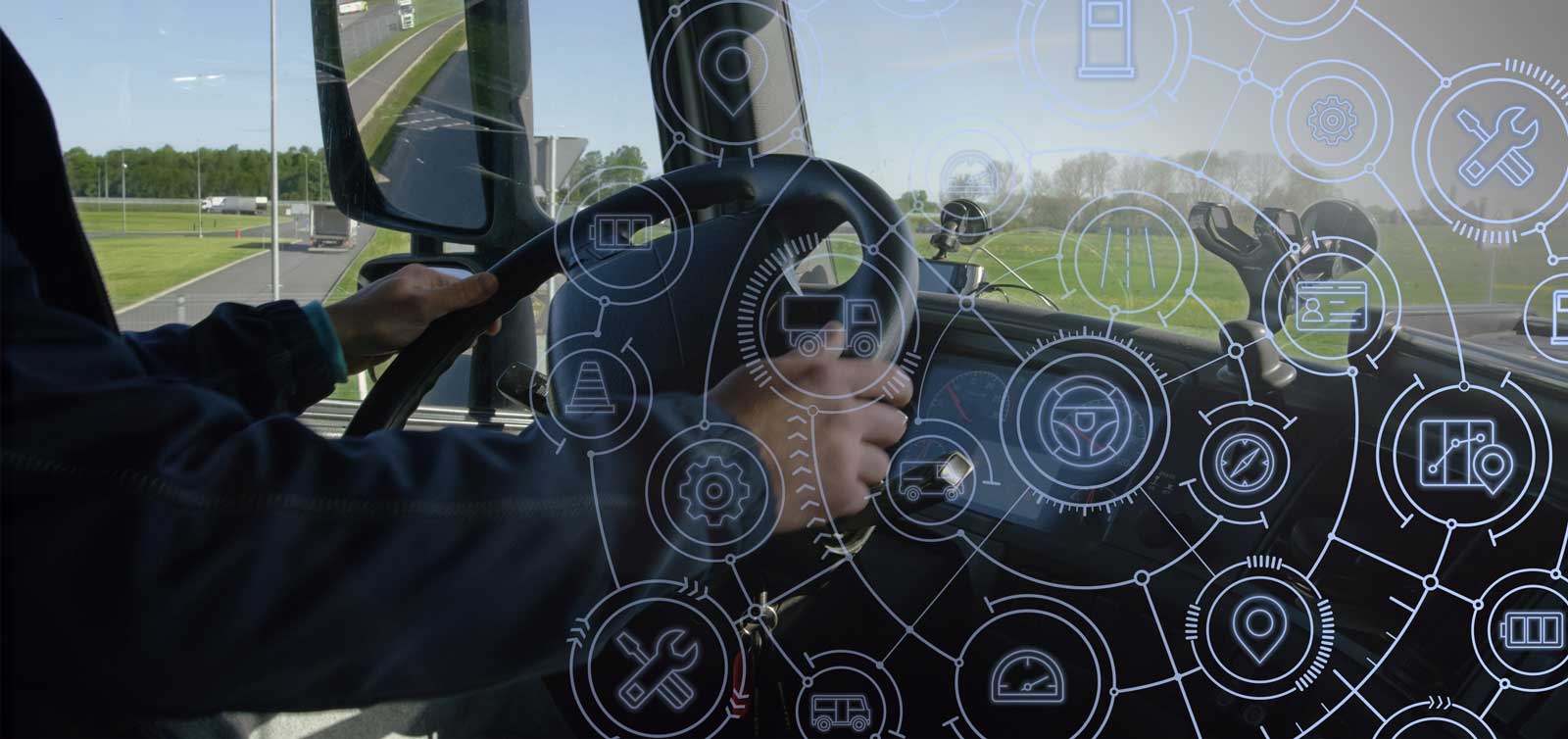
Please note: To view the latest logistics trends for 2023 click here.
The past two years have seen a massive acceleration of developments in logistics. In 2022, these changes will continue and progress further. Digitization and sustainability will have a substantial impact on how we work in logistics. Our preview for 2022 summarizes the biggest trends for the coming year.
Logistics Future Trends in 2022
People have always been intrigued by the future. The great unknown and the possibilities it offers fascinate everyone. We imagine technologies and developments and assume that they will never exist – and yet we end up holding that very technology in our hands, such as our modern pocket computer: the smartphone.
However, there are other advancements, that are emerging right now and gradually making their way into the mainstream of our society. These technologies will influence logistics on a large and growing scale already in 2022. They are numerous and varied and will affect logistics as we know it in many sectors: in processes, in mobility, in warehousing, in security, and in the stability of supply chains.

Logistics 4.0 Starts a New Era: Digitization of Logistics
For some time now, we have been increasingly shifting to so-called Logistics 4.0 – a designation derived from Industry 4.0. This new era of logistics is based essentially on digitization, or more precisely on the automation of business and logistics processes, and the networking of devices and companies with one another. The objective of Logistics 4.0 is to simplify processes, increase efficiency, and stabilize global supply chains. Especially in challenging times like the present, it is vital to identify threats along the supply chain and eliminate them immediately.
Logistics 4.0 is associated with various issues that will have a key impact on the future of logistics: Big Data, the use of machines and automation, and networking. Digitization will also be noticeable in road traffic: On the one hand, autonomous driving will increase the safety of road users, and on the other, it will benefit the flow of traffic with fewer traffic jams.






Big Data and Networking for Logistics Automation
Data is a crucial factor for logistics and is becoming more and more important as the volume of data increases. With ever new software and smarter hardware, more and more data can be collected and exchanged with each other. Based on the respective data, the logistics companies involved can draw conclusions from the past and provide forecasts for the future.
The aim of deploying Big Data and intelligent networking of market participants is to stabilize the entire supply chain and anticipate and avoid potential failures or disruptions, or to develop alternative plans in order to still meet the specified schedules. The data can also be used to optimize transport routes to improve their efficiency.
There are multiple possible data sources:
- weather and traffic data
- vehicle diagnostics and location information
- economic developments
- developments in commodity production
- traditional business and logistics figures from companies
Besides optimized risk management, networking also contributes to creating transparency along the supply chain and providing all companies involved with detailed information about the status of a delivery.
Countertrend to Globalization
In logistics, the past decades have been characterized above all by globalization. A wide variety of locations around the world are becoming ever more closely interconnected, and more and more goods are being moved across all continents. With the outbreak of the Corona pandemic, globalization was shown its limits – and a countertrend is emerging.
Global integration has resulted in interdependence of supply chains. Individual failures or interruptions in supply chains, particularly in China, have in turn led to delays and complications in many other places around the world. A stronger regional focus is now intended to dissolve these dependencies and make the regions more independent of each other to restore the stability of the supply chains.
Robots in Logistics
We are no longer alone: In one of the most popular visions of the future, we live side by side with robots. The functionality of today’s robots may still be very far from what is imagined in science fiction movies, but they can already perform simple tasks and thus support us in our business lives. Robots are currently being used in commissioning, for example, to reduce the workload of warehouse staff. They are used particularly in e-commerce and in warehouses for consumer goods.
Robots gather the goods for incoming orders and transport heavy loads through the warehouses. In doing so, they calculate the fastest routes beforehand, efficiently prepare the consignments, and bring the goods to the handover point, where the next robot takes over. Collisions with other robots and humans are avoided via sensors.
In the course of the year, such robots will be increasingly deployed in commissioning. Due to the fast-growing e-commerce business, demand will continue to rise – as will the capabilities of the digital helpers.
Multichannel Logistics
Another trend in 2022 is multichannel logistics. Recent years have impressively demonstrated how easily supply chains can collapse under certain conditions. To prevent such a risk, logistics is becoming more diversified. Freight is thus transported by all relevant modes of transport: road, water, rail, or air.
If there are difficulties with a particular transport mode, it is possible to switch to an alternative mode. The Suez Canal obstruction and the resulting severe disruption of maritime transport have highlighted the shortcomings of relying on a single mode of transport. The same applies to the current constraints or congestion in, for example, maritime or rail transport. Being able to quickly shift to road freight in such cases can be decisive in avoiding delivery delays and maintaining the stability of the supply chain. The prerequisite for this is adequate multi-channel logistics.
Sustainability in Logistics
A global megatrend for the coming years and decades is sustainability. Logistics in particular can make a substantial contribution to saving greenhouse gas emissions. According to WEF studies, logistics and transport account for 5.5 percent of all CO2 emissions worldwide – all the greater is the need for action in this sector and the need for eco-friendly solutions for the future of logistics.
“I believe that the topic of ecology has been underestimated for years, or its importance has not even been properly understood. The task of decarbonization and ‘deep recycling’ – we also call it ‘cradle-to-cradle economics’ – is the task of this century.
Matthias Horx, futurologist, in conversation with GS1 network online
There are numerous different approaches to achieve this: the use of electric trucks for last-mile delivery, bio-LNG as fuel for long-distance transport with heavy trucks, or smaller changes such as the establishment of a fleet of Longer Heavier Vehicles (LHVs). In particular, the choice of fuel and the further development of the respective technologies play a major role in reducing CO2 and other emissions.

Technologies such as bio-LNG hold great promise for the future of heavy-duty transportation. Given the very good existing infrastructure of filling stations, all relevant routes in the largest European countries can easily be covered with bio-LNG – provided that the production of bio-LNG can meet the growing demand. In three years, there will probably be more supply than demand. In the meantime, LNG trucks can also be refueled with classic LNG from natural gas – which already now leads to a lower carbon footprint compared to diesel.
Another alternative is CNG: compressed natural gas. Unlike LNG, it is not yet liquefied. There is already a comprehensive filling station network for CNG throughout Europe, with Germany, northern Italy and Switzerland being the main pioneers. And with a reduction in CO2 of between 20 and 55 percent compared to gasoline engines, the technology is significantly more eco-friendly than conventional drives.
Logistics Is More Than Just Road Transport
There are different logistical options for transporting goods - by road, rail, water, or air. In the past, speed and cost were the decisive factors in choosing the right means of transport. Today, sustainability is becoming more and more important. Sustainability does not end with the movement of goods, however: warehouse logistics also play a role when it comes to the sustainability of logistics companies, e.g., in the choice of packaging or the source from which companies obtain their energy.
Carbon Reporting: Supply Chain Transparency
Carbon reporting is a valuable tool to further reduce emissions and it will become more prevalent in the future. With carbon reporting, companies provide insight into their CO2 and pollutant emissions, eventually leading to greater transparency in their supply chains. This transparency prompts the companies involved to keep their emissions as low as possible so as to achieve the least possible impact on the climate. After all, sustainability plays an ever-greater role in the selection of corporate partners and improves a company’s competitive position.
To actively promote sustainable development, DHL Freight introduced the DHL Green Carrier Certification last year, which allows to measure the sustainability efforts of our subcontractors.
Conclusion on the Future of Logistics and the Outlook for 2022
Digitization will have a significant impact on logistics in the current year. Many innovations have already been introduced and new technologies will be further developed, thus simplifying processes and increasing the stability of the supply chain worldwide. With the megatrend of sustainability, the entire logistics industry will set a path-breaking course in 2022. The task is to reconcile logistics with nature, while at the same time maintaining the profitability of logistics companies. We are in the midst of a major upheaval caused by digitization and climate change, from which those market players will emerge successfully who adapt to it early on and actively participate in the introduction of new technologies.
Go to the latest blog article: Logistics Trends 2023



